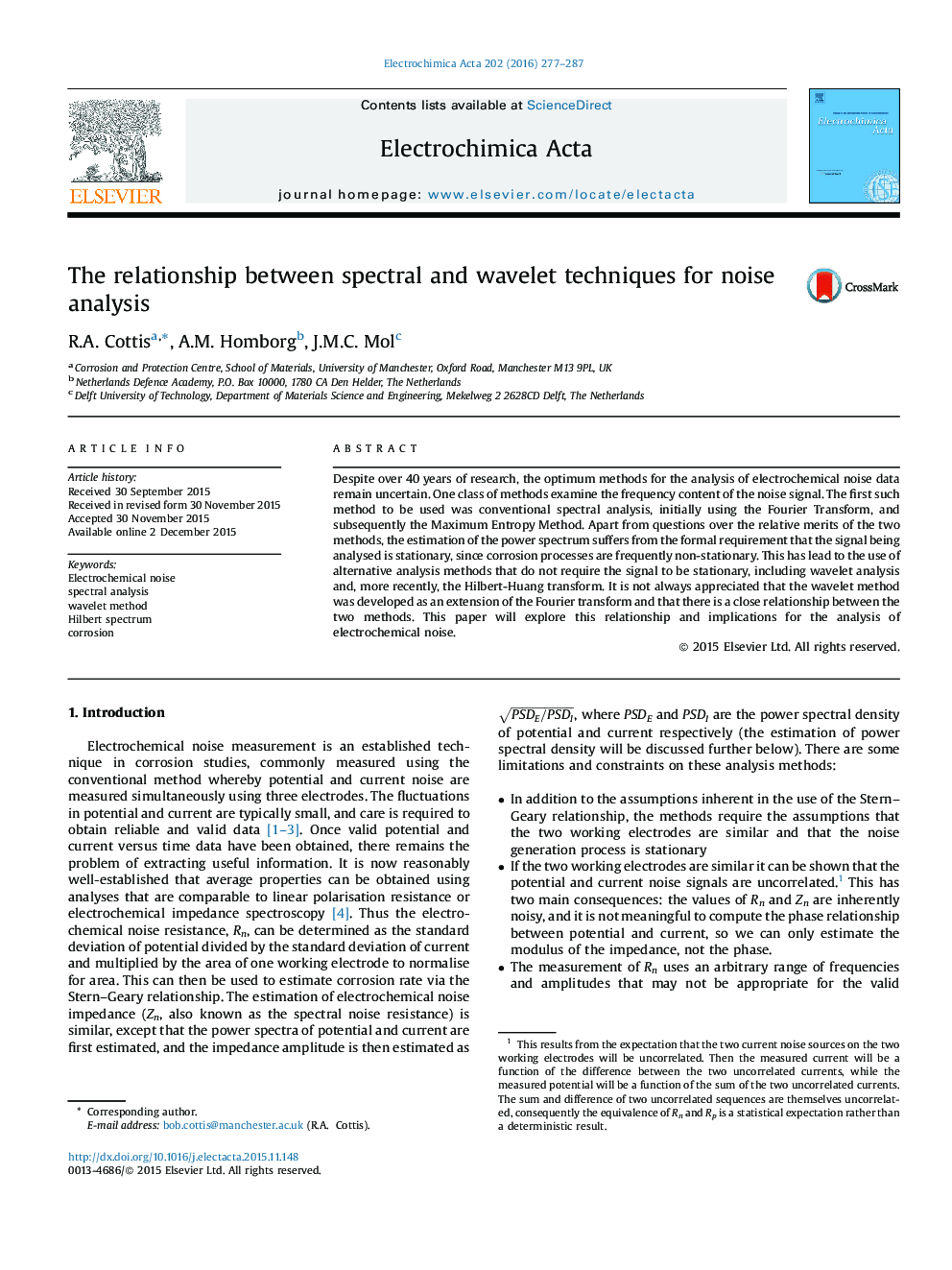| Article ID | Journal | Published Year | Pages | File Type |
|---|---|---|---|---|
| 183080 | Electrochimica Acta | 2016 | 11 Pages |
Despite over 40 years of research, the optimum methods for the analysis of electrochemical noise data remain uncertain. One class of methods examine the frequency content of the noise signal. The first such method to be used was conventional spectral analysis, initially using the Fourier Transform, and subsequently the Maximum Entropy Method. Apart from questions over the relative merits of the two methods, the estimation of the power spectrum suffers from the formal requirement that the signal being analysed is stationary, since corrosion processes are frequently non-stationary. This has lead to the use of alternative analysis methods that do not require the signal to be stationary, including wavelet analysis and, more recently, the Hilbert-Huang transform. It is not always appreciated that the wavelet method was developed as an extension of the Fourier transform and that there is a close relationship between the two methods. This paper will explore this relationship and implications for the analysis of electrochemical noise.
